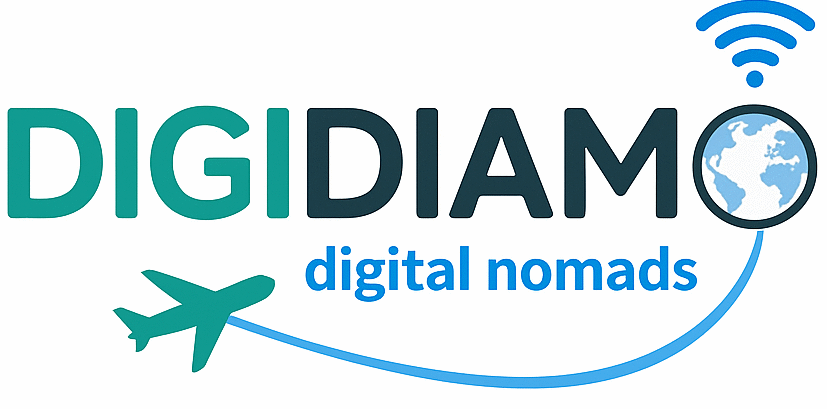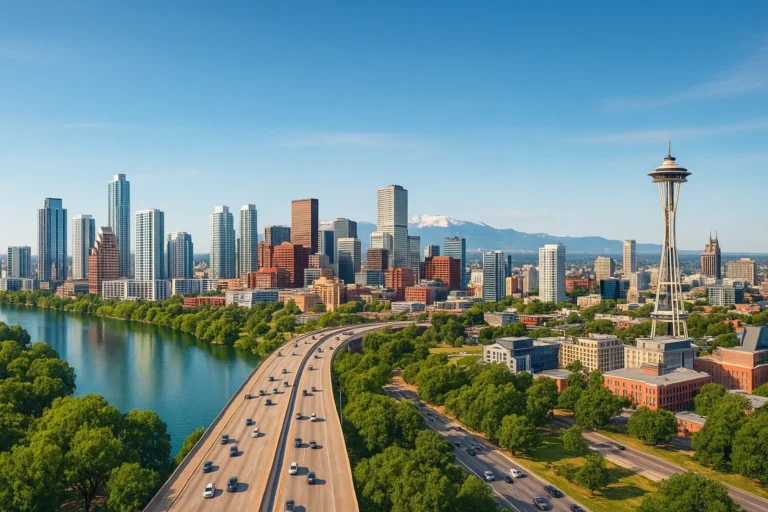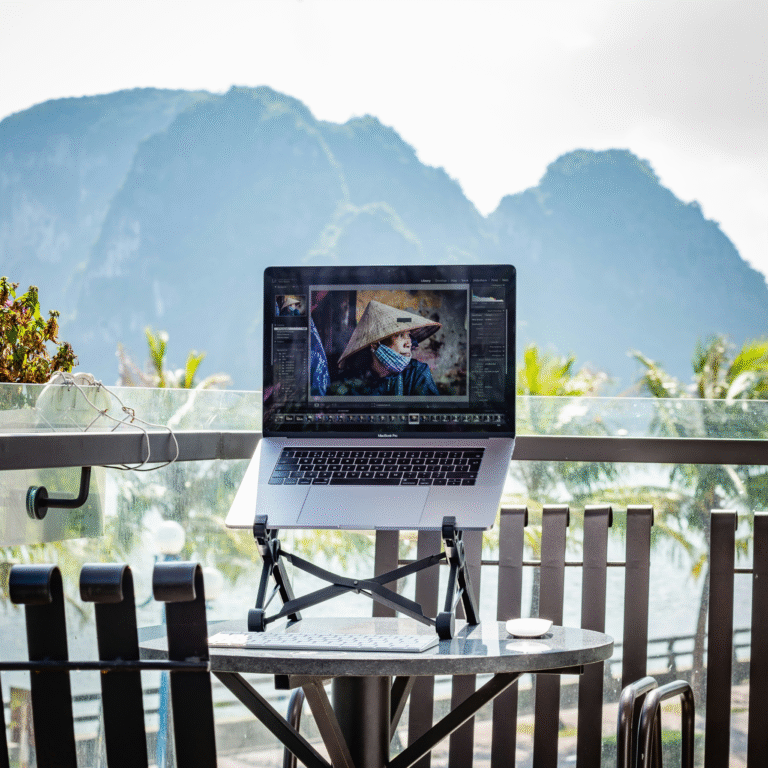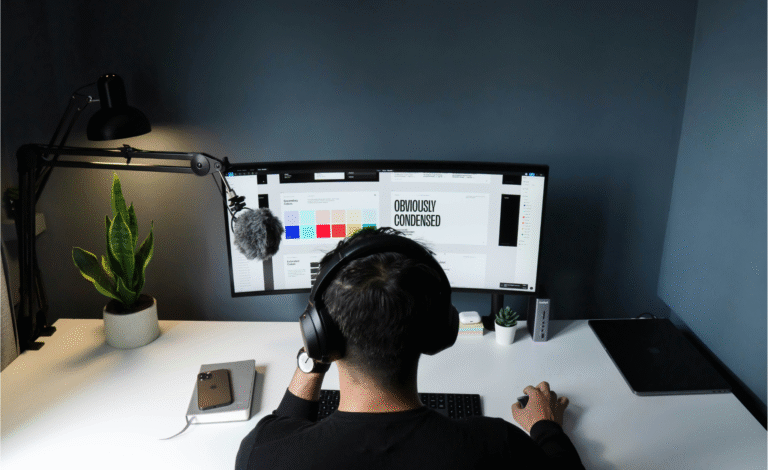Building a productive remote work routine as a nomad
One of the hardest parts of working remotely is keeping a steady rhythm. Offices provide natural structure commute times, coffee breaks, meetings at set hours. As a digital nomad, those signals vanish. You might wake up in Bali, move to Lisbon the next month, then fly to Mexico after. Each place has a different culture, time zone, and daily flow. Without a routine, days blur, deadlines slip, and energy drains. Building a productive remote work routine is not about strict schedules but about creating anchors that travel with you. For a broader view of how routines connect with jobs, tools, and lifestyle choices, the complete remote work for digital nomads guide brings every element together.

Why routines matter for nomads
Freedom without structure quickly becomes chaos. Remote workers who thrive usually have clear habits. A routine stabilizes your energy, helps manage time zones, and signals to your brain when to switch between work and rest. With travel, routine also reduces decision fatigue. Instead of asking “when do I start” every morning, you lean on anchors you set weeks before.
Challenges of building routines while traveling
- Changing time zones: A six-hour shift can disrupt sleep and meetings.
- Unstable internet: Work hours often shift around café Wi-Fi or SIM card coverage.
- Social distractions: New friends, events, and adventures tempt you away from focus.
- Isolation: Too much solo work without interaction leads to burnout.
A routine is the solution that balances both flexibility and discipline.
Core elements of a nomad routine
- Anchor hours
Pick three to four hours daily when you always work deeply, no matter where you are. These hours become non-negotiable. - Work environment check
Before committing to a café or coworking space, test Wi-Fi, desk comfort, and noise. Small details prevent frustration later. - Morning rituals
Simple actions like stretching, journaling, or making coffee cue your brain for work. - Task planning
Use a single tool like Notion, Trello, or Todoist to write daily goals. Keep it minimal to avoid overload. - Break signals
End the day with a walk, gym session, or cooking. Signals matter when there’s no commute.
Morning routines that set the tone
Most successful nomads start their mornings with clear rituals. It might include meditation, exercise, or reviewing a short task list. Even ten minutes of planning can save hours of distraction later. Avoid checking emails the moment you wake up. Instead, set priorities first, then dive into communication.
Managing time zones
Remote work means dealing with global teams. A mismatch in schedules often leads to late nights or early mornings. The trick is to map overlap windows.
| Location | Best overlap with US clients | Best overlap with EU clients |
|---|---|---|
| Bali | Late night local time | Smooth overlap mornings |
| Lisbon | Afternoon/evening | Perfect morning to afternoon |
| Mexico City | Morning to noon | Early overlap only |
Choosing roles that fit your natural rhythm prevents exhaustion. If you like mornings, target European clients. If you are a night owl, US-based companies align better.
Productivity tools that support routines
- Clockify: Tracks time and keeps you accountable.
- RescueTime: Analyzes how you spend online hours.
- Forest: Uses a focus timer to block distractions.
- Google Calendar: Simple scheduling with timezone adjustments.
These tools turn intentions into daily habits you can measure.
Balancing focus and flexibility
Nomads who push for strict 9-to-5 schedules often struggle. The point is not to recreate office life but to keep productive balance. A good rhythm is four focused hours, one or two collaborative hours, then time for exploration. This keeps energy high without sacrificing work quality.
Staying healthy while working remotely
Productivity depends on health. A good routine should include:
- Exercise: Even short bodyweight sessions in hotel rooms keep energy steady.
- Sleep hygiene: Carry a sleep mask and earplugs. Jet lag is easier with consistent sleep cues.
- Nutrition: Local food is exciting but balance heavy meals with lighter ones.
- Hydration: Travel often leads to dehydration. A refillable bottle saves both money and focus.
Social routines and community
Isolation is a hidden risk of remote work. Schedule regular coworking days, join local meetups, or join online nomad groups. Human connection reduces stress and boosts creativity. A small ritual, like joining a language exchange each Thursday, builds social anchors in new cities.
Dealing with distractions
Nomads face both pleasant and unpleasant distractions beaches, nightlife, noisy hostels. To stay consistent:
- Use noise-cancelling headphones.
- Work in blocks, then reward yourself with exploration.
- Set boundaries with travel friends so they respect your work time.
Discipline makes the adventures sweeter, because work gets done first.
Sample daily routine for a digital nomad
| Time | Activity | Purpose |
|---|---|---|
| 7:30 | Morning ritual (stretch, coffee, journaling) | Signal start of day |
| 8:00–12:00 | Deep work block | High-value tasks without distraction |
| 12:00–13:00 | Lunch + short walk | Recharge |
| 13:00–15:00 | Collaboration window (meetings, messages) | Sync with team/clients |
| 15:00–16:00 | Admin tasks (invoices, emails) | Keep operations tidy |
| 16:00 onward | Exploration, gym, social time | Balance work and travel |
This example adapts across time zones. The key is anchoring deep work hours and shifting the rest.
Adapting routines when changing countries
Every move disrupts rhythm. The solution is to reset quickly. When you arrive somewhere new:
- Find your main workspace within 48 hours.
- Set your anchor hours immediately.
- Build one local habit, like morning walks, to replace lost structure.
The faster you rebuild routines, the smoother your adjustment.
Long-term sustainability
Burnout is a real threat for nomads who try to work nonstop while traveling. Regular breaks are part of a sustainable routine. Plan rest days, even short digital detox weekends. Energy cycles matter as much as schedules.
Conclusion
A productive remote work routine balances structure with flexibility. By setting anchor hours, using tools wisely, and caring for health, digital nomads create stability while moving through ever-changing environments. Strong routines turn freedom into sustained productivity. If you want to understand the hurdles most nomads face while keeping routines, read our guide on the biggest challenges of remote work and how to overcome them.






